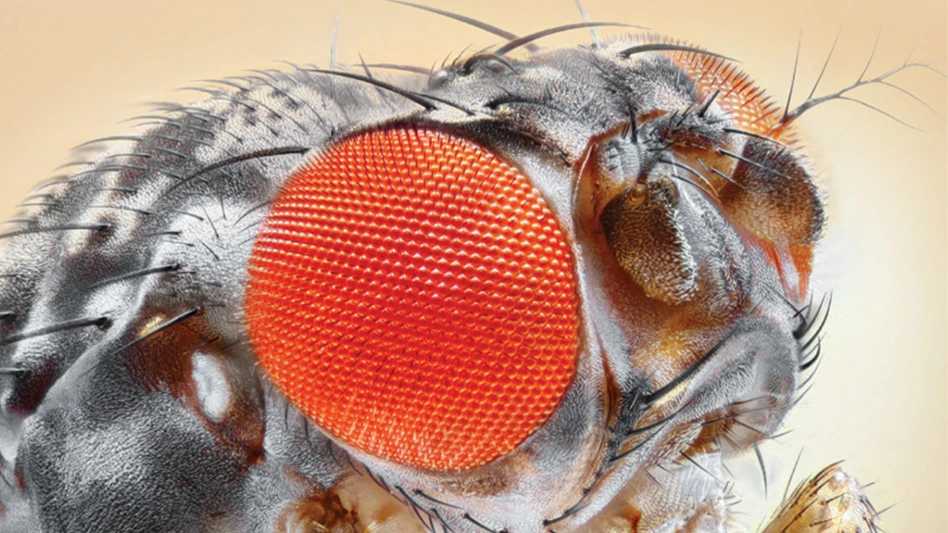
Editor’s Note: The following article was adapted with permission from Pinto & Associates.
We call them small fruit flies (not to be confused with Tephritid fruit flies), Drosophila flies, vinegar flies or pomace flies. Customers call them annoying. Our most common small fruit fly is Drosophilamelanogaster, and it and D. simulans are known for their large, bright red eyes. A newer pest is the dark-eyed fruit fly, actually a group of related flies, including D. repleta, with darker red eyes and habits closer to phorid flies than fruit flies.
Adult flies are tiny, about 1/8-inch (3-4 mm) long and rather chunky. They have short, three-segmented antennae and one pair of large wings that overlap over the back at rest. The wings have a prominent cross vein that helps identify the fly. Eye color ranges from bright red to dark red. Body color ranges from brownish-yellow to brownish-black. The abdomen has darker cross-bands, appearing somewhat striped. D. melanogaster flies tend to hover in small circles; dark-eyed fruit flies rest more often on walls. The Drosophila larva is a legless, eyeless, white maggot, about 1/4-3/8 inches (7-8 mm) long when fully grown.
D. melanogaster larvae feed on yeast and fungi growing in semi-liquid, fermenting or vinegary foods, especially overripe fruits and vegetables. Eggs are laid on the surface of fermenting material. Larvae feed near the surface for five to six days, then crawl to drier locations and pupate. The brown pupal cases have a distinctive pair of short “horns” on one end and can be confused with seeds. At higher temps, each life cycle takes only eight to 10 days.
We call them small fruit flies, Drosophila flies, vinegar flies or pomace flies. Customers call them annoying.
FRUIT FLIES AS PESTS. Indoors, Drosophila flies are attracted to foods or beverages with vinegary, yeasty or fermenting odors such as overripe produce, wine, beer, cider, pickles and ketchup. They can be major pests in food-processing plants, commercial kitchens, breweries, canneries, etc., where they can contaminate foods. Dark-eyed fruit fly larvae are more likely to be found in scummy drains or in animal feces than in fermenting produce.
Flies can enter buildings through screens or as eggs or larvae in overripe produce from gardens and farm stands. The flies may move from produce to infest scummy material in dirty garbage cans, floor drains, slop sinks or mop buckets, drip pans, under cracked floor tiles, recycling bins, beer dispensers, garbage disposals and similar sites. The key to control is to find and eliminate (clean up) all of the breeding sites. Deep cleaning of infested drains or hidden areas with microbial foam is useful. There are fruit fly traps available for monitoring or control. Adult flies can be killed with space sprays.
KEY POINTS TO REMEMBER. Fruit flies are a very common, somewhat seasonal, indoor pest. They tend to hover over food or drink. Because they breed in such a variety of sites, technicians must be sure to inspect beyond the obvious.

Explore the June 2018 Issue
Check out more from this issue and find your next story to read.